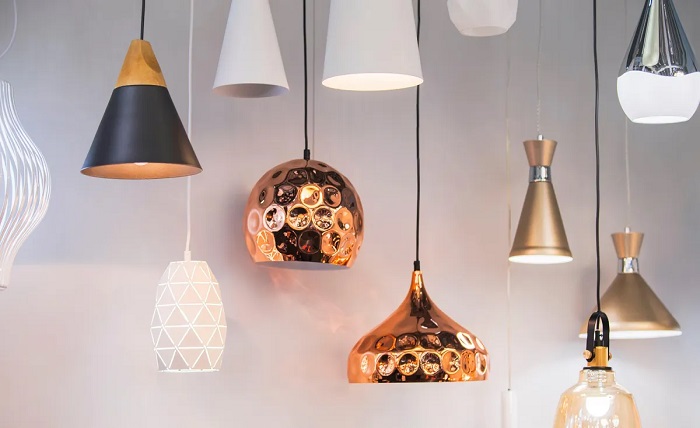What Are The Different Type Of Pendant Light Materials

Illuminating a room can be a tricky task. Pendant lighting is a great way to add personality and warmth to any space, but choosing the right materials is essential to create the desired effect. Various materials are available for pendant lights, each with unique characteristics. This post will explore some of the most popular pendant materials and their benefits.
Glass
One of the benefits of glass is that it can come in various colours and finishes. Clear glass is famous for allowing maximum light output and showcasing the bulb. Frosted or tinted glass, on the other hand, can create a more subdued and moody effect.
Glass lights can be delicate, so choosing a sturdy and durable material is essential. A sleek and modern room may require a minimalist glass pendant, while a more traditional space may benefit from a more intricate design.
Metal
Metal pendants are popular for those looking for a more industrial or modern look. They can be made from various materials, including aluminium, steel, brass, and copper. Each metal has unique characteristics, creating a different effect in a room.
Aluminium is lightweight and durable, making it a popular choice for lights. On the other hand, steel is a heavier and sturdier material perfect for creating a more industrial look.
Brass and copper are two metals that have gained popularity in recent years. Both materials have a warm and inviting quality that is perfect for creating a cosy and comfortable atmosphere. Copper can also be left to the patina over time, creating a unique and aged look.
Wood
Wood lights are a great way to add a natural and organic touch to a room. Wood can be used in various styles, from modern and sleek to rustic and traditional. One of the benefits of wood is that it can come in various finishes, from natural and raw to stained and polished.
Wood pendants can also be made from various kinds of wood with unique grains and textures. Some popular woods include oak, maple, and walnut. Wood pendant ceiling lights can also be carved or shaped into unique designs, creating a unique piece.
When choosing a wood light, it’s essential to consider the style of the room. A natural and raw wood pendant may work well in a rustic or farmhouse-style room, while a polished and refined light may be better suited for a more modern space.
Fabric
Fabric lights are a great way to add texture and softness to a room. Fabric can come in various materials, including cotton, linen, and silk. Each material has unique characteristics and can create a different effect in a room.
Cotton is a lightweight, breathable fabric that creates a casual, relaxed atmosphere. Meanwhile, Linen is refined and sophisticated, perfect for more formal spaces.
Fabric lights can also come in various colours and patterns, with endless design possibilities. When choosing a fabric light, it’s essential to consider the style of the room and the colour scheme.
Summing Up
When choosing suitable pendant lights material, there are various factors to consider. The style of the room’s desired effect and the material’s durability is essential to remember.
Glass is a classic and versatile material that can create a peaceful and warm atmosphere, while metal is a popular choice for those looking for an industrial or modern look. Wood adds a natural and organic touch to a room, while fabric can create a soft and textured effect.
It’s also important to consider the size and shape of the light. A large and dramatic pendant can make a statement in a room, while a smaller and more subtle light can add a touch of elegance and refinement.